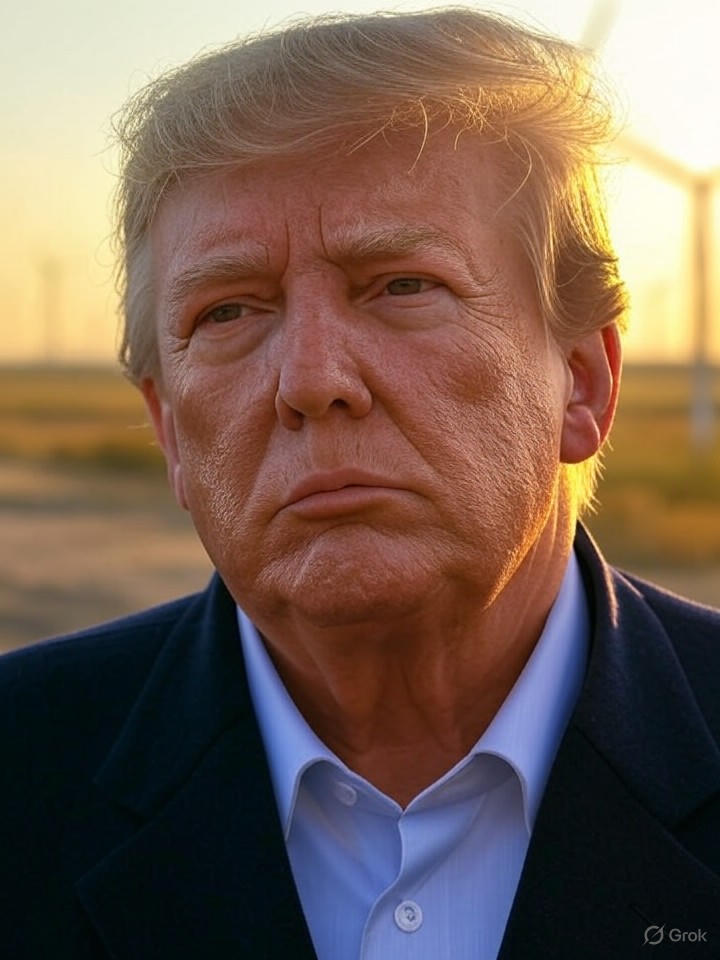President Donald Trump’s aggressive stance against renewable energy sources is raising alarms among industry leaders, who warn that it could precipitate a severe power shortage and drive up electricity prices across the U.S. In a recent report, executives from solar and wind companies highlighted how new tariffs, permitting hurdles, and the phasing out of key tax incentives are disrupting project development. This comes at a time when demand for electricity is surging due to data centers, electric vehicles, and industrial electrification.
The administration’s policies, embedded in the One Big Beautiful Bill (OBBB), are set to eliminate the Investment Tax Credit (ITC) for solar and the Production Tax Credit (PTC) for wind by the end of 2025. These credits have been pivotal in financing renewable projects, often covering up to 30% of costs. Without them, developers face higher capital expenses, potentially stalling billions in investments.
Tariffs and Supply Chain Disruptions Amplify Costs
Tariffs on imported solar panels and wind components, imposed under Trump’s trade agenda, are already inflating costs. According to CNBC, industry insiders report that these levies, combined with stricter domestic content requirements, could increase project expenses by 20% or more. This is particularly acute for utility-scale installations, where margins are thin.
Permitting delays add another layer of complexity. The Trump administration has slowed federal approvals for new renewable projects on public lands, prioritizing fossil fuel development. Executives argue this bottleneck will limit the addition of clean power capacity, exacerbating grid strain as older coal plants retire without adequate replacements.
Potential Power Crunch and Price Spikes Loom
Analysts project that without accelerated renewable deployment, the U.S. could face a shortfall of up to 100 gigawatts by 2030, leading to reliability issues during peak demand. A post on X from energy expert Jesse D. Jenkins, referencing the OBBB’s impact, noted that projects starting before 2025 might still qualify for credits but face extended timelines, potentially delaying grid relief.
Electricity prices have already risen 10% since January, as per data cited in a CNN analysis, attributing part of the hike to curtailed renewable growth. Democrats are seizing on this, positioning it as a midterm election issue, while Republicans defend the policies as protecting American jobs in traditional energy sectors.
Industry Responses and Adaptation Strategies
Renewable firms are scrambling to adapt. Some are rushing to commence construction before tax credit deadlines, as advised in a Solar.com guide, which urges homeowners to lock in savings by year’s end. Others are exploring private financing or state-level incentives to bridge the gap.
However, the broader economic ripple effects are concerning. A rollback of clean energy supports could eliminate hundreds of thousands of jobs, per an analysis shared by Robert Reich on X, estimating 830,000 losses by 2030 and a 50% price surge by 2035. This contrasts with the administration’s claims that OBBB will lower costs through deregulation.
Long-Term Implications for Energy Security
Looking ahead, the shift away from renewables might bolster fossil fuels temporarily, but experts warn of vulnerability to global oil price volatility. The Institute for Energy Research questions whether OBBB will indeed raise prices, suggesting activists overstate the risks, yet acknowledges the bill’s focus on streamlining fossil projects.
Utilities are caught in the middle, facing higher wholesale costs if supply tightens. In states like Texas and California, where renewables dominate, executives predict blackouts and rate hikes without policy reversals. As one solar CEO told CNBC, “We’re planning for a crunch that could redefine energy affordability.”
Balancing Innovation and Policy Shifts
Innovation in storage and efficiency might mitigate some impacts, but without federal backing, progress could slow. The Treasury’s tighter rules on tax credits, detailed in a OilPrice.com report, further restrict eligibility, phasing out subsidies over two years.
Ultimately, the debate underscores a pivotal moment for U.S. energy strategy. While Trump’s approach aims to revive coal and gas, critics argue it ignores the cost-effectiveness of renewables, which have driven down power prices in recent years. As the 2026 midterms approach, these tensions will likely intensify, shaping the future of American electricity.




 WebProNews is an iEntry Publication
WebProNews is an iEntry Publication